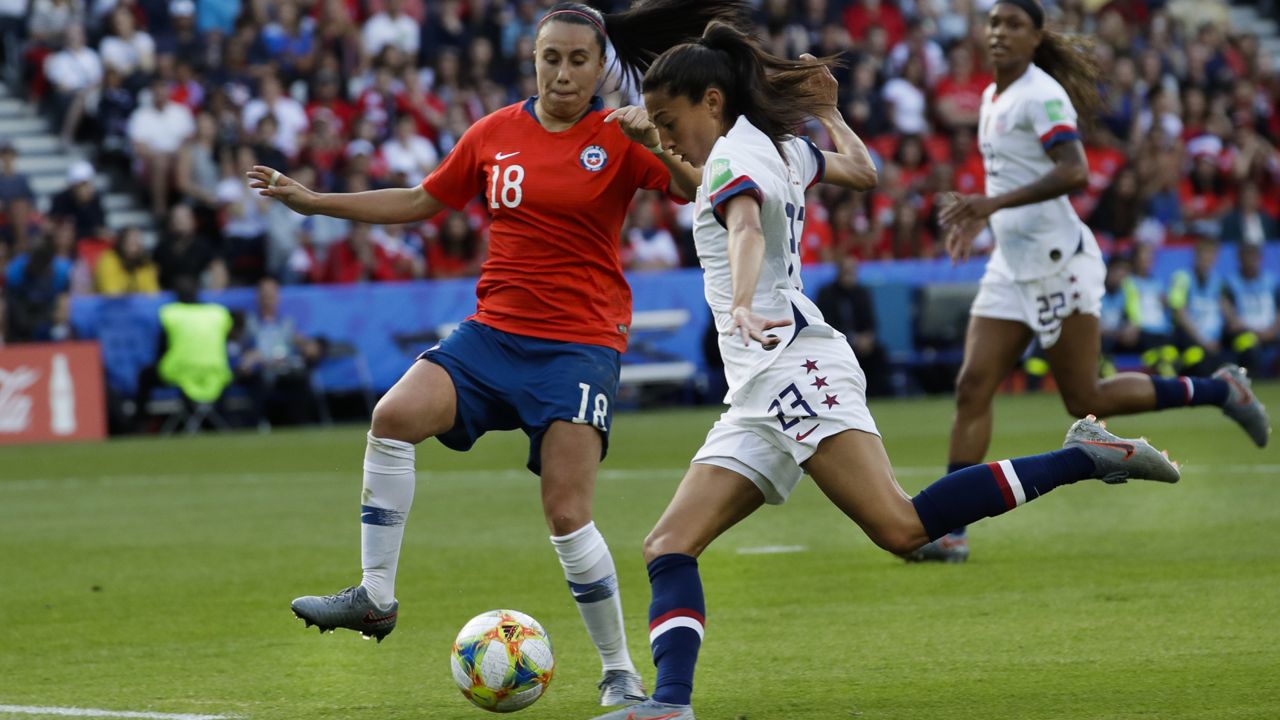LOS ANGELES (CNS) — Women's sports continue to be almost entirely excluded from television news and sports highlights shows, according to a USC/Purdue University study published Wednesday.
The survey of men's and women's sports news coverage has been conducted every five years since 1989. In the latest study, researchers found that 95% of total television coverage as well as the ESPN sports highlights show SportsCenter focused on men's sports in 2019.
They saw a similar lopsidedness in social media posts and in online sports newsletters coverage, which were included in the report for the first time since researchers began gathering data three decades ago.
The study — published in the journal Communication & Sport — documented a few bright spots for women's sports, including increasing live televised coverage and prominent news outlets like the Los Angeles Times devoting more resources to women's sports.
But the coverage of women's sports hasn't increased in terms of television news and highlights shows, the more critical components of the "larger media apparatus" that helps create audiences for sports, said report author Michael Messner.
"News media focus on the `big three' men's sports — football, basketball, and baseball — creating audience knowledge about and excitement for the same sporting events over and over," said Messner, a professor of sociology and gender studies at the USC Dornsife College of Letters, Arts and Sciences. "Meanwhile, women's sports continue to get short shrift, which is significant when you consider the larger picture of girls' and women's efforts to achieve equal opportunities, resources, pay, and respect in sports."
Messner and study co-author Cheryl Cooky of Purdue University say this "missing piece" of media coverage is stunting the growth of audience interest in and excitement for women's sports.
"Eighty percent of the news and highlights programs in our study devoted zero time for women's sports," said Cooky, a professor of American studies and women's, gender and sexuality studies. "On the rare broadcast when a women's sports story does appear, it is usually a case of `one and done' — a single women's sports story partially eclipsed by a cluster of men's stories that precede it, follow it and are longer in length."
To ensure their data sample included various sports seasons, the authors analyzed three two-week blocks of televised news on three Los Angeles network affiliates in March, July, and November 2019, along with three weeks of the one-hour SportsCenter program. For the first time in the study's 30-year history, they also included online daily sports newsletters from networks, including NBC, CBS, and ESPN and their associated Twitter accounts.
The inclusion of online coverage was partly in response to assurances by some in the media industry that more coverage of women's sports could be found in online and social media coverage. But the more expansive analysis revealed only slightly more coverage of women's sports, which made up 9% of online newsletter content and 10% of Twitter posts.
Messner and Cooky found that even the tiny percentage of TV news coverage devoted to women's sports in 2019 was inflated due to a burst of coverage of the U.S. soccer team's victory in the Women's World Cup and to a lesser extent, the U.S. women's tennis competitors at Wimbledon.
When they subtracted just the Women's World Cup coverage from the total, the local television affiliates' coverage of women's sports dropped from 5.1% to 4.0% and the airtime on ESPN's SportsCenter devoted to women's sports dropped from 5.4% to 3.5%, a proportion similar to prior iterations of the study.



